Notes
- As usual, I've cropped in to each photo so that we can see differences more clearly. For a detailed explanation of my testing methodology, see here.
- The various smartphone cameras have very different angles of view, i.e. some cover a much smaller arc in front of the lens. This, in part, explains why the subjects - all cropped to the same degree - appear different sizes in the comparisons. The other factor is, of course, the resolution the photos were taken in.
- The Nokia 808 was set at 8 megapixels (in its PureView Creative mode), to better match the resolutions of the other camera phones here.
- All phones were left on default/auto throughout, apart from manually controlling flash on/off for the low light test.
- The Lumia 920 photo in the 'pub' test was taken with the generally excellent third party app CameraPro for logistical reasons (in that the Windows Phone app is feature-light and doesn't have a 'self-timer' option!)
- Other smartphones considered for inclusion included the Sony Xperia Z, rejected because of its appalling noise reduction blur (see here) and the HTC One, rejected because it would produce images with not enough detail (see here).
Test 1: Full sunlight, medium distance
The Herald from the BMA, looking at the rather faded BEA logo on its paintwork from 20 metres away.
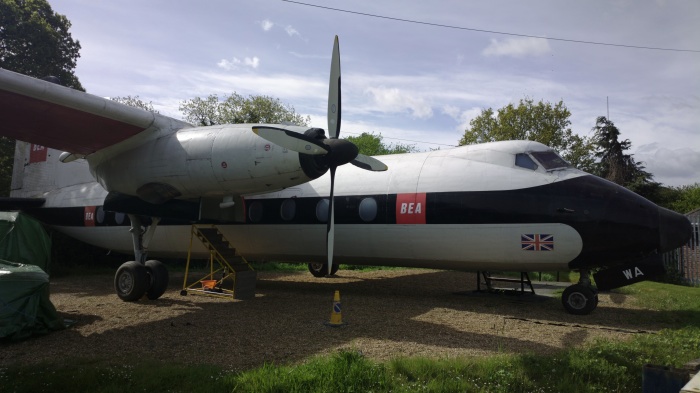
I took the exact same shot with all five smartphones and then present here the central crop, to show the level (and quality) of detail captured. Clockwise from top left: Nokia 808 PureView, Samsung Galaxy S4, Samsung Galaxy S III, Nokia Lumia 920 and Nokia N8:
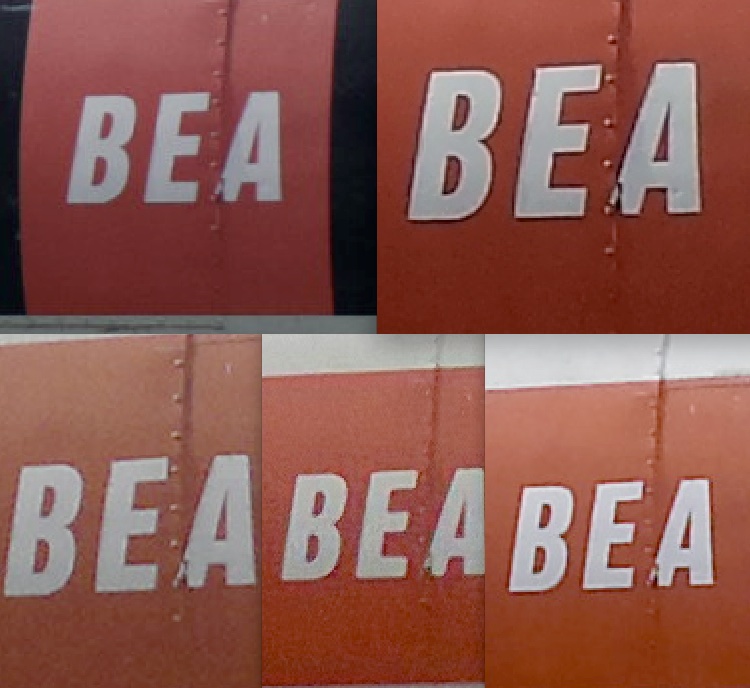
This crop comparison instantly shows why you have to be a little careful in scoring camera tests. At first glance, the crop from the Galaxy S4 looks dramatically better, but then you realise that this is because of the extreme (though very clever) noise reduction and sharpening algorithms that have been applied by Samsung. Images treated like this do look better for general users, mind you, so this shouldn't be discounted.
You can tell where the algorithms have been by looking at the artificial dark border around each letter and the artificially pure blocks of solid colour. The Nokia 808's image is most close to reality (faded paint etc.) but I'll acknowledge that it looks a bit 'soft' here by comparison. The SGS III's version is much the same as the GS4, but at lower resolution, while the N8 produces a generally accurate image, spoilt only by some noisy artefacts. The 920 doesn't fare too badly - again noise and digital artefacts spoil the effect.
Nokia 808 PureView: 8 pts; Samsung Galaxy S4 7 pts; Samsung Galaxy S III 6 pts; Nokia Lumia 920 6 pts; Nokia N8 7 pts
Test 2: Hazy sunlight, distance detail
The Lands End pub from the end of its gravel overflow car park, looking at signage on the building:
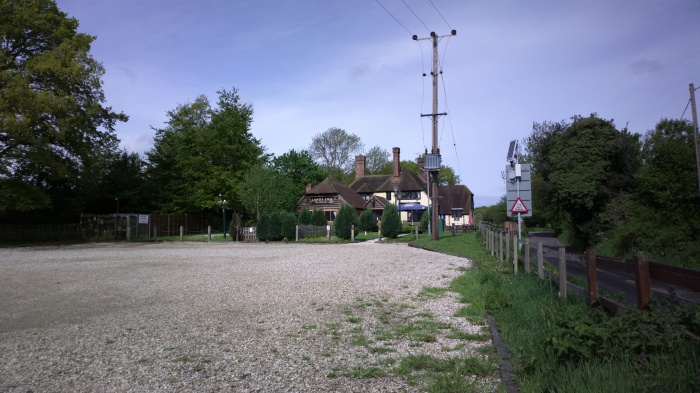
I took the exact same shot with all five smartphones and then present here the central crop, to show the level (and quality) of detail captured. Clockwise from top left: Nokia 808 PureView, Samsung Galaxy S4, Samsung Galaxy S III, Nokia Lumia 920 and Nokia N8 (click any hyperlink to download the original JPG):
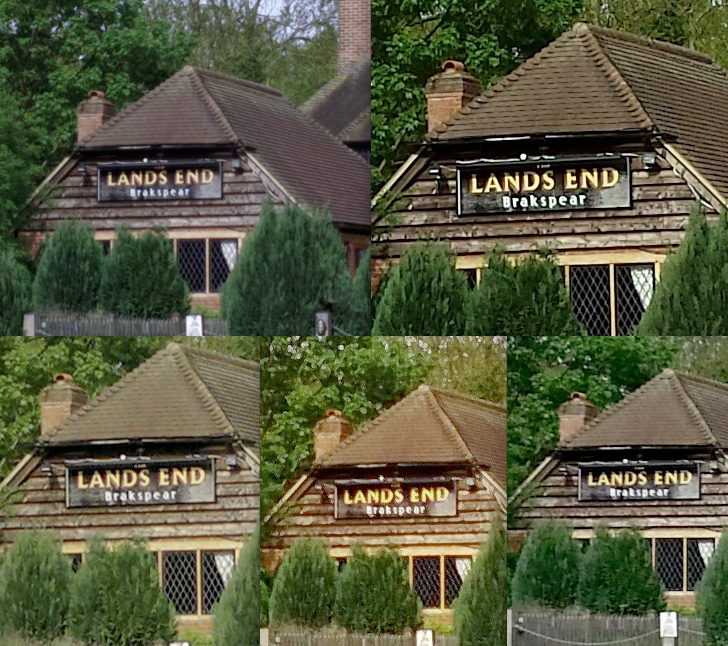
It's a similar story here, though looking at more extreme detail in the distance, pushing the resolution of these camera phones to the limit (see also the zoom test below). It's a choice between the natural looking N8 and 808 shots and the processed versions in the two Samsung Galaxy phones. The casual user would probably look at these crops and give the win to the Galaxy S4, and in truth it's impressive how much detail is coaxed out of the relatively tiny sensor, even you can't overlook the over-sharpening. All five phone cameras did quite well here, mind you, and scoring is going to be subjective.
Nokia 808 PureView: 8 pts; Samsung Galaxy S4 9 pts; Samsung Galaxy S III 8 pts; Nokia Lumia 920 7 pts; Nokia N8 9 pts
Test 3: Full sunlight, zoom allowed
Looking out my window at distant roof detail. Note that digital zoom in most cameras is normally frowned upon, but the artefacts aren't as ugly as they used to be, with extra resolution now being used to smooth out jaggies in the detail. Plus, general users tend to use zoom anyway, not knowing it's supposed to be a bad idea, so I think this is a valid test case.
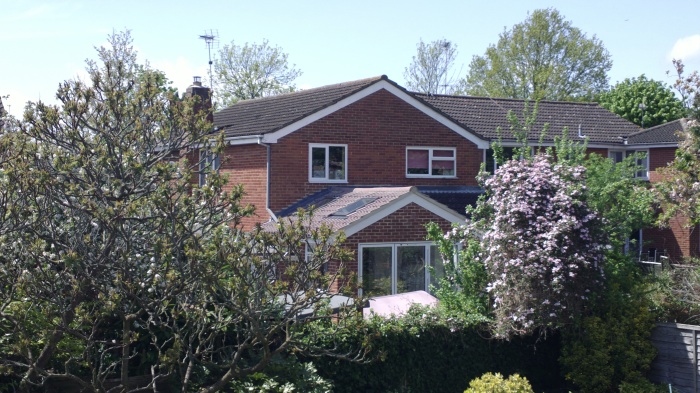
I took the exact same shot with all five smartphones and then present here the central crop, to show the level (and quality) of detail captured. Clockwise from top left: Nokia 808 PureView, Samsung Galaxy S4, Samsung Galaxy S III, Nokia Lumia 920 and Nokia N8:
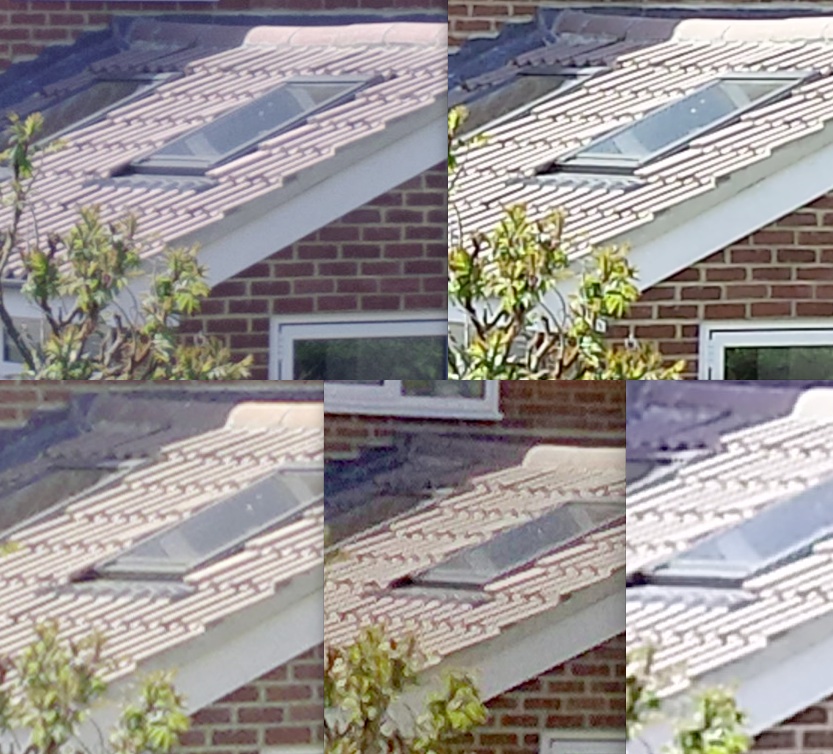
The Nokia 808 PureView was born to do this sort of thing, of course, boasting lossless software zoom from its 41 megapixel sensor, so it's not surprising that its image is almost perfect, with zero artefacts. What's surprising here is that the Galaxy S4's camera gets close - its crop is obviously 'enhanced' but again a general user would pick it as looking clear and detailed - you have to look at brick and leaf detail to really appreciate that you're not looking strictly at reality.
The other phone cameras struggle slightly more, with the N8 next and the noisy Lumia 920 and the blown out SGS III crops bringing up the rear.
Nokia 808 PureView: 9 pts; Samsung Galaxy S4 7 pts; Samsung Galaxy S III 4 pts; Nokia Lumia 920 4 pts; Nokia N8 6 pts
Test 4: Full sunlight, tricky macro shot
A very tricky macro shot, here, with a pair of tiny flowers, lit strongly against a shady background, one reflecting sunlight back and the other not:
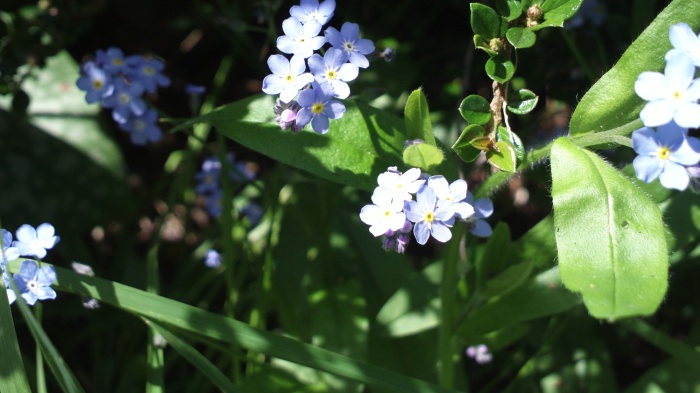
I took the exact same shot with all five smartphones and then present here the central crop, to show the level (and quality) of detail captured. Clockwise from top left: Nokia 808 PureView, Samsung Galaxy S4, Samsung Galaxy S III, Nokia Lumia 920 and Nokia N8:
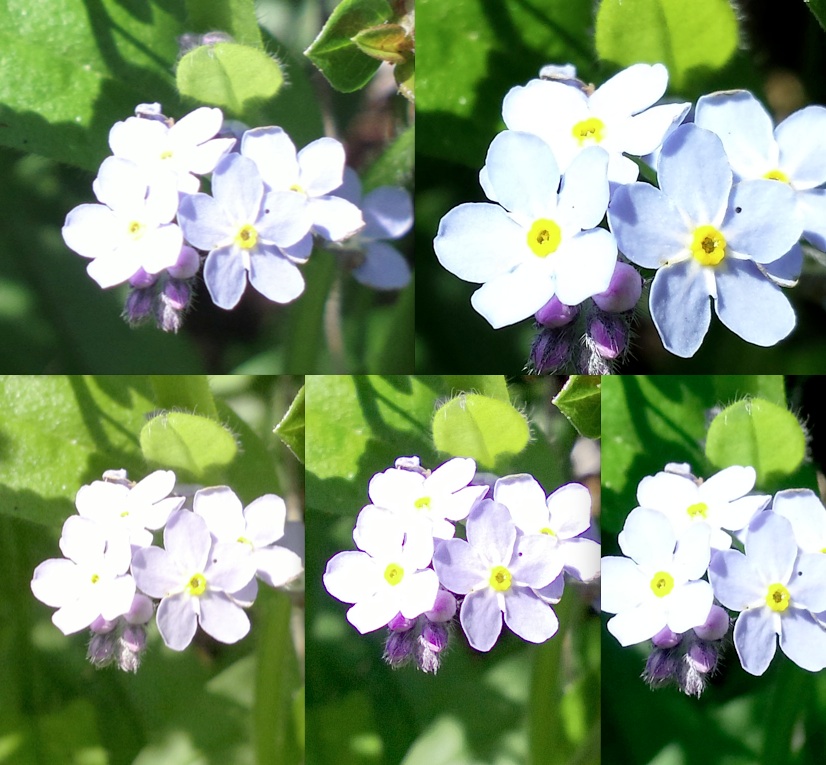
All the phone cameras struggled with getting the exposure right here. In each case, I could have fiddled with exposure manually and gotten better results, but we're explicitly comparing like with like here, and using full auto settings. The Nokia 808 PureView is particularly weak on extreme macro shots, since its optics don't allow focussing closer than 15cm or so. The shot above is with some PureView zoom added in and it still doesn't get anywhere near as 'close' as the other phones.
The two Samsung Galaxy devices best the best showing in terms of capturing the blue flower, with the Lumia 920 managing only a weak violet and the N8 hardly managing any colour at all. As I say, a very tricky shot to get and my fingers were itching to reach for those exposure icons!
Nokia 808 PureView: 5 pts; Samsung Galaxy S4 8 pts; Samsung Galaxy S III 6 pts; Nokia Lumia 920 5 pts; Nokia N8 4 pts
Test 5: Another macro, easier lighting, looking at detail
Much easier lighting this time, and with a subject which should reward a camera with an eye for detail:
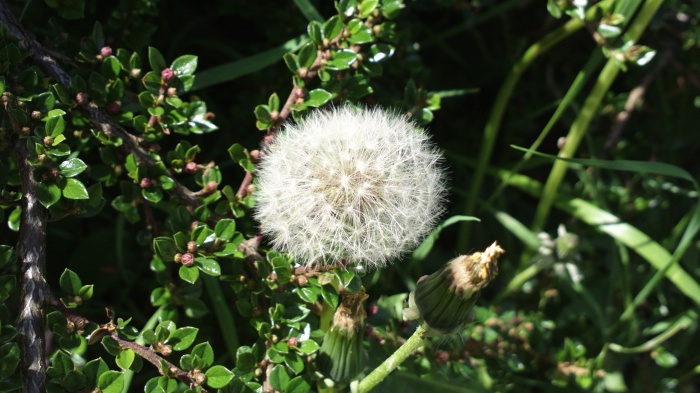
I took the exact same shot with all five smartphones and then present here the central crop, to show the level (and quality) of detail captured. Clockwise from top left: Nokia 808 PureView, Samsung Galaxy S4, Samsung Galaxy S III, Nokia Lumia 920 and Nokia N8:
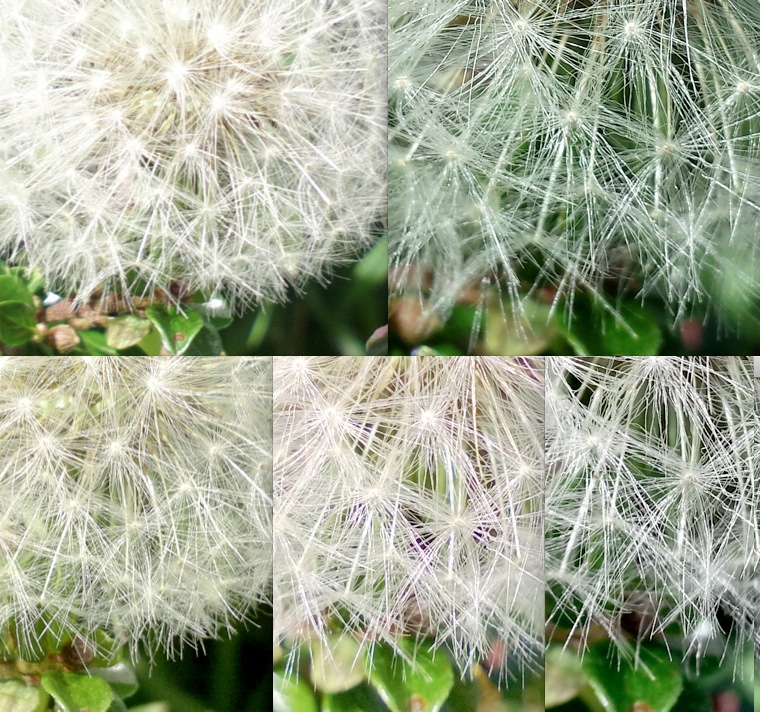
All five devices did a much better job here, with the Nokia 808 again being hampered by not being able to get as close as the other smartphones. Striking though the Lumia 920 and N8 images are, the crops from the two Galaxy phones are simply stunning, perhaps because the sharpening algorithms really, really like dandelions!...
Nokia 808 PureView: 5 pts; Samsung Galaxy S4 10 pts; Samsung Galaxy S III 9 pts; Nokia Lumia 920 8 pts; Nokia N8 7 pts
Test 6: Low light, static indoor scene (no flash)
I set up a low light environment in controlled conditions at home, with flash disabled on each device. In each I focussed on the 'i' in the word 'family':
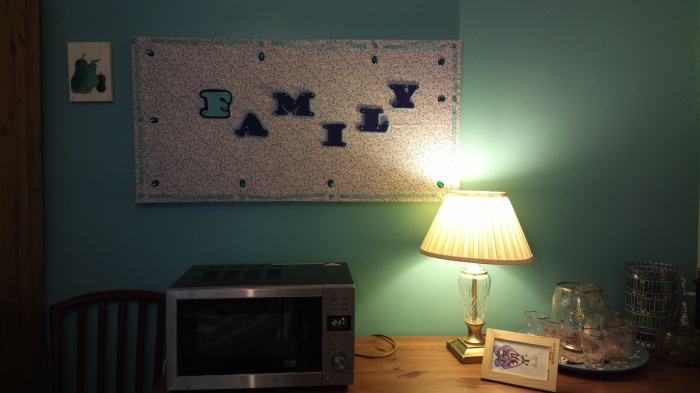
I took the exact same shot with all five smartphones and then present here the central crop, to show the level (and quality) of detail captured. Clockwise from top left: Nokia 808 PureView, Samsung Galaxy S4, Samsung Galaxy S III, Nokia Lumia 920 and Nokia N8 (click any hyperlink to download the original JPG):
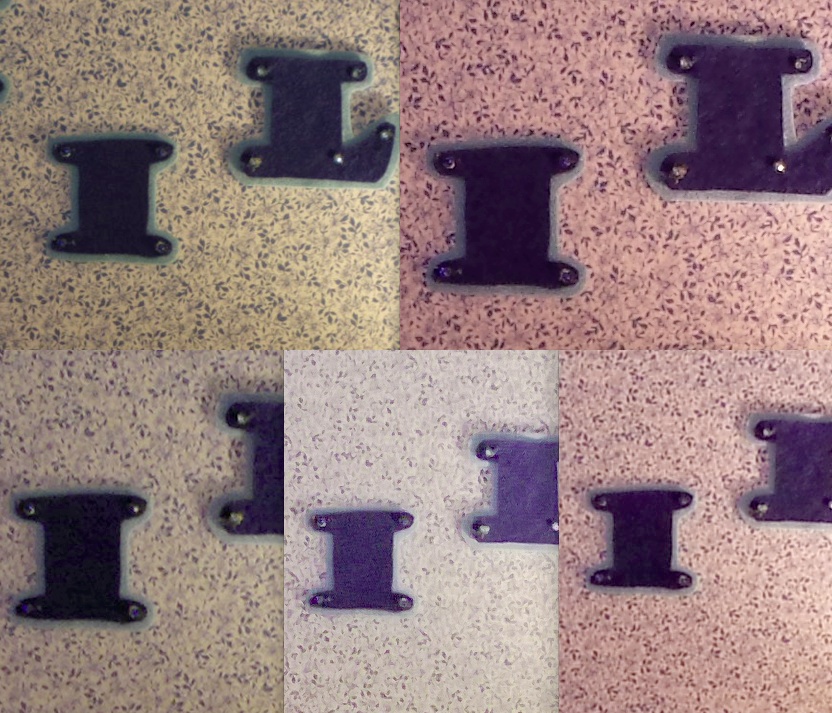
As you perhaps might expect, low light conditions start to favour the phone cameras with biggest sensors, able to gather more light, plus the Nokia devices also have the Carl Zeiss optics, which do help keep things clear when the going gets tough. The Nokia 808 crop is perfect, with the white backdrop coloured by incandescent light from the table lamp, and all the tiny blue detail visible. Stunning. The N8 and Lumia 920 also do their best, but end up with a backdrop that is 'too' white - in the 920's case losing blue leaf detail too. Both the Samsung Galaxy smartphones fare badly here, with a reddish cast where there was none in reality, though again you have to admire the sheer detail in the GS4's version.
Nokia 808 PureView: 10 pts; Samsung Galaxy S4 7 pts; Samsung Galaxy S III 5 pts; Nokia Lumia 920 5 pts; Nokia N8 8 pts
Test 7: Low light, dynamic (people moving) scene
I set up a simulated 'pub' scene, with flash allowed on each device. I tried to keep moving in the same realistic fashion for each shot - think typical pub/party. And yes, I know the top's still on the bottle - you wouldn't want me drunk in charge of a camera test, would you?!
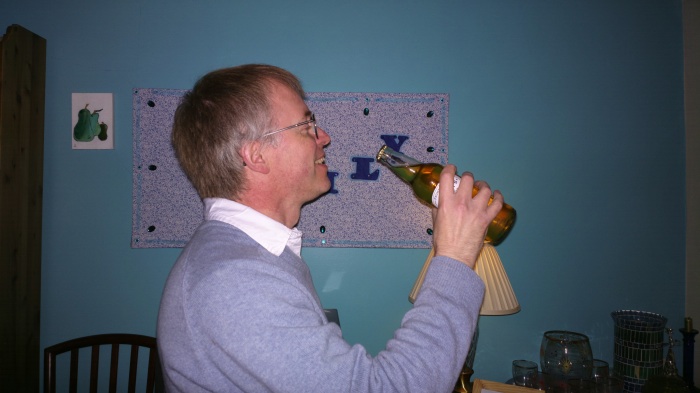
I took the exact same shot with all five smartphones and then present here the central crop, to show the level (and quality) of detail captured. Clockwise from top left: Nokia 808 PureView, Samsung Galaxy S4, Samsung Galaxy S III, Nokia Lumia 920 and Nokia N8:
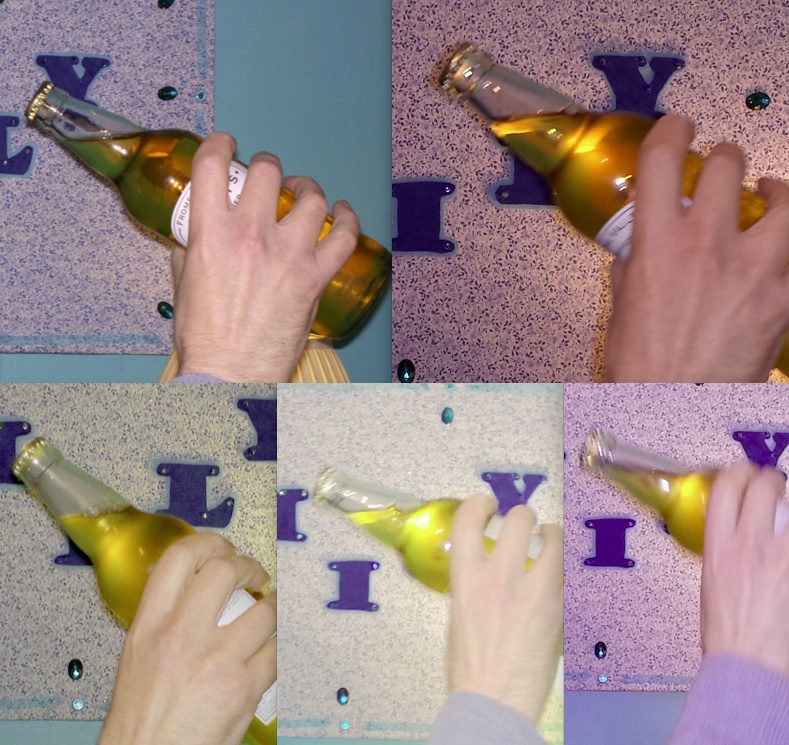
Xenon flash, of course, rules wherever there are moving people, and the Nokia 808 crop is, again, perfect - look at the writing on the bottle, look at the bottle top detail. The N8 doesn't fare quite as well, but the bottle is still fairly crisp. The LED-lit alternatives are blurrier, though again I was surprised by how close the Galaxy S4 camera got in terms of being 'acceptable' to most people in the context of an overall scene. Also note that the 'red' shifted backdrop isn't anywhere near as intrusive on the Galaxy phones with flash employed. The less said about the Lumia 920 crop the better - the one thing Nokia's 'PureView phase 2' tech isn't good at is shooting moving people indoors....
Nokia 808 PureView: 10 pts; Samsung Galaxy S4 7 pts; Samsung Galaxy S III 5 pts; Nokia Lumia 920 3 pts; Nokia N8 8 pts
______________
In summary
Adding up the points give us a rough idea of overall ranking here:
- Nokia 808 PureView: 55/70
- Samsung Galaxy S4: 55/70
- Nokia N8: 49/70
- Samsung Galaxy S III: 43/70
- Nokia Lumia 920: 38/70
It's at this point that I swear, I honestly swear that the result wasn't fixed in any way. I always leave the points totting up to the very end and that ways it's a nice surprise for me too.... You all know how much of a fan of Nokia camera hardware I am, and so it should be strongly noted that:
- this is the first time anything other than the 808 has trounced the 2010 N8
- this is the first time anything's even got close to the 808 PureView, let alone equalled its overall score
It's very impressive what Samsung has eked out of the tiny 1/3.2" sensor in the Galaxy S4 and shows what modern BSI tech and superlative image processing algorithms can do. In fact, it's also a slightly damning condemnation of the Nokia Lumia 920's image processing - with an ostensibly identical sensor and superior optics, it manages to produce dramatically less detailed images at every turn. I think we all expected more from that device and I haven't given up hope that its firmware can still improve matters.
Of course, saying the Galaxy S4 has as good a camera as the Nokia 808 PureView is a little misleading. Ultimately, the latter is more flexible and powerful, especially in the hands of someone who knows what they're doing with the Creative settings, but the point is that casual, every day users will probably find that the Galaxy S4 exceeds their expectations in terms of imaging at every turn*.
* The one possible fly in the ointment is that there's a fraction of a second 'shutter lag' in the launch Galaxy S4 firmware, but reports from testers of the next firmware version are that this lag has gone, so I'm giving Samsung the benefit of the doubt here.
Credit to Samsung then, who have just raised the bar in terms of 1/3.2" camera performance for the rest of the industry.
(Thanks to Clove for the Galaxy S4 loan)
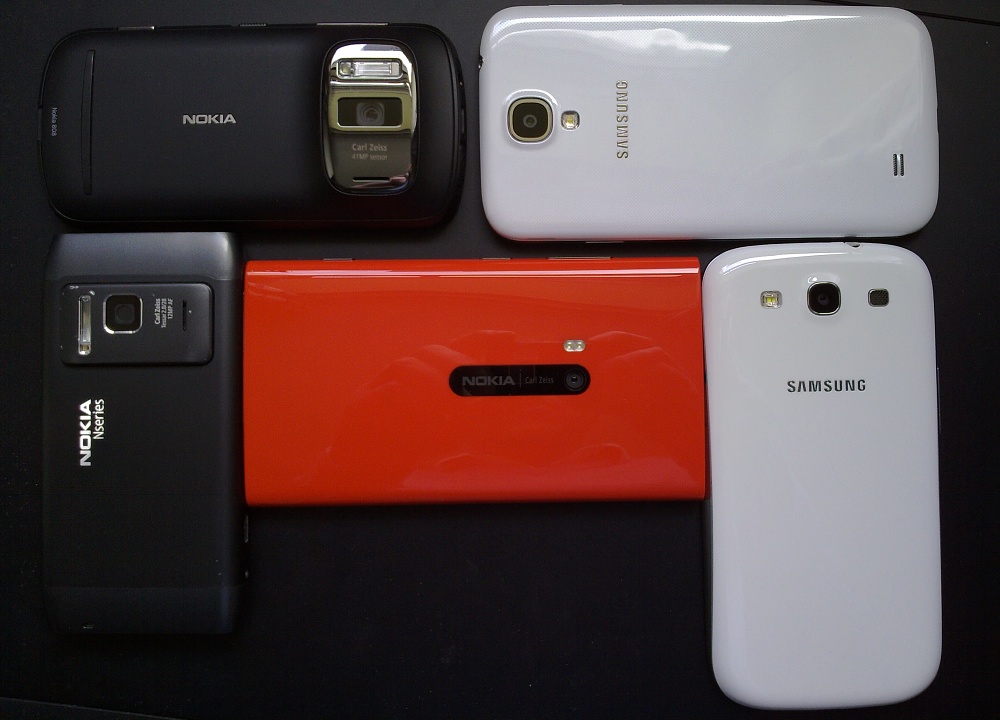
No hay comentarios:
Publicar un comentario